EMEA Office
Louizalaan 489
1050 Brussels
Belgium

With cutting-edge technology and tools, life science companies are taking advantage of the digital wave to enhance productivity and profits.
It is becoming increasingly clear to organizations that they need to move beyond merely detecting defects or deviations after they occur to predictive models that can identify potential problems before they occur.
Data management and predictive analytics have become priorities for companies as a way to detect risk more quickly and reduce costs associated with poor quality.
As an innovative and efficient quality management practice, predictive analytics can transform how organizations approach and ensure quality. With this transformative approach, quality issues are anticipated, identified, and addressed before they escalate, instead of relying on reactive approaches.
This can help businesses make more informed decisions to solve potential problems early on, and increase their chances of success.
Consequently, businesses can work more efficiently and productively.


For example, stored equipment data is used to run algorithms to understand how any equipment works. It allows the generation of plausible scenarios of equipment malfunction, thereby reducing the possibility of production downtime losses.
Quality management can also be improved through the use of Internet of Things (IoT) and sensor technologies. These technologies provide a continuous stream of data from various stages of production and usage, which provides useful insights for predictive analytics. Therefore, organizations can optimize processes and predict quality issues using more robust models.
Cross-functional collaboration of subject matter experts is another trend in quality management. Team members from different departments, including production, R&D, and data analytics, collaborate on developing predictive analytics models in this approach. Collaboration ensures a comprehensive understanding of the entire value chain, leading to more accurate predictions and more effective quality management.

Predictive analytics uses historical data to identify patterns and deviations in the production process. Sensors collect real-time data about the production process. This allows them to monitor the process closely and detect any changes in parameters that may be causing errors. In this way, defects can be prevented early.
Using predictive analytics, equipment performance data can be analyzed to predict when machines will fail or encounter issues. This allows proactive maintenance, reducing downtime, preventing product defects, and ensuring equipment operates within specified quality parameters.
Batch quality can be predicted using predictive analytics in the manufacturing process. Analytical data from raw materials, environmental conditions, and equipment settings can be used to predict whether a batch will meet quality standards before it is complete, allowing for timely adjustments.
By analyzing historical data and identifying the factors contributing to quality events, predictive analytics can automate root cause analysis. As a result, the problem-solving process is accelerated, resulting in a quick resolution and preventing future issues.
Data related to supplier performance can be assessed with predictive analytics, revealing patterns that are associated with quality issues. As a result, organizations can work closely with suppliers to address potential quality concerns before they impact production, enabling proactive management of supplier relationships.
Organizations can use predictive analytics to identify potential risks and develop mitigation strategies to ensure ongoing compliance with evolving changes in regulatory requirements.
R&D projects often result in delays and exceed budgets, which can hurt sales, competitive opportunities, and reputations. Predictive analytics can help reduce these delays.
According to a McKinsey study, the first root cause is underestimating the complexity of the project. Engineering intuition is linear, but the cumulative effect is highly nonlinear. Another root cause is overestimating the productivity of the development team. Issues with previous projects affect almost every project. (Balaji, A. et al., 2018).
Companies are adopting a new approach that uses predictive analytics to estimate project-resource requirements. These models take into account the complexity of the project and the team environment, as well as the effects of changes to working methods. By using this approach, delivery delays are reduced, R&D productivity is improved, and risks and costs are reduced at the same time.


Predictive analytics revolutionizes data-driven strategies by shifting reactive approaches to proactive ones.
Through the integration of predictive analytics with cross-functional collaboration, companies will gain insight into quality process optimization and process robustness. By using data management more effectively, companies will be able to gain a competitive advantage and make more informed decisions.
Opportunities, from early defect detection to predictive maintenance, abound. However, challenges like data quality, data privacy, data integration, and expertise shortage persist. Addressing these challenges is key to unlocking the full potential of predictive analytics, ensuring efficiency, risk reduction, and sustained quality excellence.
The Smart Factory, for instance, helps organizations envision and reimagine the future of manufacturing, accelerating their digital transformation and making manufacturers more productive. In this immersive learning center, which simulates a real factory, early adopters can gain insight into new technologies. The factory is continuously collecting and sharing data from the floor shop, from connected devices, machinery, and production systems to the cloud. It monitors the entire production process using integrated and collaborative manufacturing systems.
This cyber-physical system uses advanced technologies such as Artificial Intelligence (AI), machine learning, big data analytics, cloud computing, and industrial Internet of Things (IoT) to analyze data, drive automated processes, and learn as it operates. In this way, issues can be addressed more proactively, manufacturing processes can be improved, and new demands can be better met.
Digitally enabled pharmaceutical laboratories are another example, where advanced real-time analytics and laboratory equipment can avoid deviations and out-of-speculations and improve scheduling and capacity management
(Carrai, N. et al., 2021).
Explore what lies at the forefront of innovation and quality in life sciences.
EMEA Office
Louizalaan 489
1050 Brussels
Belgium
US Office
Scilife Inc.
228 E 45th St. RM 9E
New York, NY 10017
EMEA Office
Louizalaan 489
1050 Brussels
Belgium
US Office
Scilife Inc.
228 E 45th St. RM 9E
New York, NY 10017
Copyright 2025 Scilife N.V. All rights reserved.